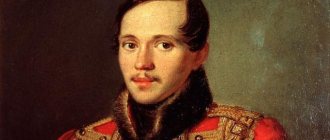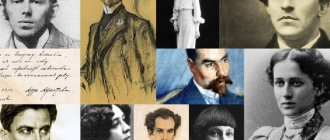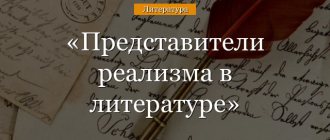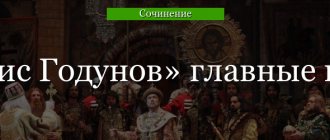·
Why did Russia begin to develop rapidly in the 18th century?
The reforms of Peter I led to the strengthening of Russian autocracy and the rapprochement of Russia with European countries. During the transformation, the achievements of science and technology, as well as culture and industry, were used.
Russian literature also received a new stage of development. Cultural and educational figures have achieved particular success.
Peter I and Catherine II understood that the press and education were the main engines of state development. Therefore, they supported these directions.
Literature of the 18th century: new trends
·
What new things appeared in culture and education in the 18th century?
During the era of transformations, schools and colleges were opened, as well as Moscow University, the Academy of Sciences and the Academy of Arts. A permanent Russian theater appeared. People were given the opportunity to express their opinions.
Literature of the 18th century was enriched with new genres.
What new genres have become popular since the 1760s?
The civic position has come to the fore in literature. New genres that appeared in the 18th century:
- satire;
- everyday comedy of manners;
- Oh yeah;
- classicism - it was formed by Feofan Prokopovich, the highest hierarch of the Orthodox Church.
Since 1760, other genres have appeared:
- tearful drama;
- story;
- prose novel;
- comic opera.
General features of the development of Russian literature in the 18th century
Peter's reforms provoked, to a certain extent, the rejection of old Russian cultural traditions. However, in the field of literature they were not at all widespread. Although ancient Russian literature is rich in outstanding works, they have never been an object of mass interest even at the top of society. Many of them were completely forgotten by the end of the 17th century. Therefore, new Russian literature was created on a pan-European, ancient and, naturally, Christian basis.
The main literary genres were borrowed from Europe: “high” (ode, tragedy, epic) and “low” (comedy, fable, satire). In an ideological sense, the spirit of the Enlightenment is palpable in the best works of Russian literature of the century. Literary trends also corresponded to pan-European trends - first it was classicism, then sentimentalism.
Changes in language (partly introduced by official decisions, partly occurring naturally) required changes in the purely technical side of literary activity. Most of all, this was reflected in poetry, which moved from the syllabic system (which implies taking into account only the number of syllables, but not stress and their location) to the syllabic-tonic system (with the now familiar stanzas, iambs, trochees...). However, the style of prose also changed - the literary language began to gradually approach the natural.
The set of the most common literary themes has changed. Traditional fairy tales and epics (as well as derivatives from them) were no longer popular - Russian readers preferred to get acquainted with retellings from ancient literature, poems and “novels” dedicated to historical events, and love lyrics. In the times of Peter the Great, the genre of adventure work arose in Russian literature (in which all events were deliberately placed not in the “thirtieth kingdom”, but in real geography, and there were no supernatural motives).
The quantity and demand for purely religious literature has decreased. Although it continued to exist and even be promoted purposefully, it was largely replaced by journalism and controversy. Even Peter’s famous associate, priest Feofan Prokopovich, became known not for his religious creations, but for his journalistic and secular didactic works.
Literature of the Ancient World and Antiquity
Period from XXX century BC until the 3rd century AD In the ancient world, various literary genres existed and actively developed: teachings, sacred hymns, fairy tales, poems, biographies, fables, religious texts, proverbs, poetry, prophecies. The works are closely related to folklore. Literary texts often included songs from folklore.
This period includes:
- Ancient Egyptian literature, Mesopotamian (Sumerian, Assyro-Babylonian), Hittite, Huritic and Ugaritic-Phoenician literatures;
- classical literatures of Asia: ancient Chinese, ancient Indian, ancient Iranian, ancient Hebrew;
- ancient literatures: Chinese, Indian, Persian, Jewish, Greek, Roman.
The main works of ancient Indian literature were the Vedas - a collection of sacred hymns, the epic poems "Mahabharata" and "Ramayana".
Diamonds of ancient Chinese literature is the collection “Lunyu. Sayings" of Confucius, the book of songs "Shi Jing", oracle inscriptions on the bones and shells of the skull "Jiaguwen".
Greek literature of the archaic period is the poems “Iliad” and “Odyssey” by Homer, “Theogony” and “Works and Days” by Hesiod.
In most classifications, the literature of the Ancient World is combined with the ancient period.
Ancient literature includes two national literatures: ancient Greek and ancient Roman. Its brightest representatives are Aeschylus, Virgil, Sophocles, Plato, Euripides, Aristophanes, Aristotle, Ovid, Apuleius.
The literature of the ancient Greeks and Romans produced many written monuments created in dialects of Greek and Latin that date back to the 1st millennium BC. e. and the beginning of the 1st millennium AD. e.
During the period of antiquity, the main genres of European literature and the foundations of the science of literature were formed; Aristotle identified three main types: epic, lyricism and drama. This classification is still relevant today.
The most prominent representatives of Russian literature of the 18th century
There were quite a lot of writers in Russia in the 18th century. Several magazines were published, where artistic and journalistic works were published. But not all the literature of that time was so original and high-quality as to leave any noticeable mark in the history of culture. In later times, no more than one and a half dozen authors actually enjoyed fame.
Authors of the first half of the 18th century
The first half of the 18th century was more characterized by the development of Russian poetry - mainly theoretical and didactic works were presented in prose. This was the period of formation of the Russian language, poetics and grammar, close to modern ones.
- VC. Trediakovsky (1703-1769) was a court poet and after his death was considered an example of bad taste in poetry. However, it was he who, as a theorist, developed the Russian syllabic-tonic system of versification. Trediakovsky even used his personal conflict with Lomonosov and Sumarokov for a more subtle study of Russian poetic theory. He is also known as an excellent translator of French works on Roman history.
- M.V. Lomonosov (1711-1765) was not only an encyclopedist, but also a poet and literary theorist. In general, he supported Trediakovsky’s poetic reform. Lomonosov is known as the author of solemn odes in honor of monarchs and outstanding events; the most famous of them is dedicated to the accession of Elizabeth Petrovna. The scientist also developed a new grammar and theory of oratory.
- A.P. Sumarokov (1717-1777), with his disputes with Lomonosov and Trediakovsky, also greatly advanced the theory of Russian poetry. As a writer, he tried many genres: he wrote odes, satires, elegies, songs, madrigals, epigrams, comic and tragic dramatic works. The most famous tragedies were “Khorev” and “Dimitri the Pretender”.
- HELL. Kantemir (1708-1744) represented the classical syllabic Russian school of versification (as he wrote even before the reform of Trediakovsky and Lomonosov). His works were published in Russia after the author's death. Kantemir is the first Russian satirist. His most famous satire is “On those who blaspheme the doctrine.”
In the second half of the century, based on the reforms of Trediakovsky and Lomonosov, in the context of the development of theater and publishing, the number of writers increased. But the main thing is that the number of genres popular with the public and represented by outstanding works has also increased.
Writers of the second half of the 18th century
The period of the reign of Elizabeth Petrovna and especially Catherine II and Paul I was characterized by the rapid development of drama and prose. If earlier poetry dominated Russian literature, then by the end of the 18th century this ceased.
- G.R. Derzhavin (1743-1816) became perhaps the most famous Russian poet of the century. Derzhavin brought Lomonosov's poetic classicism to perfection. He gained fame thanks to the ode “Felitsa”, dedicated to Catherine II. Derzhavin is also known as the author of the poems “Waterfall”, “To Rulers and Judges”, and his “Monument” was later used in his work by A.S. Pushkin.
- I WOULD. Knyazhnin (1740-1791) reached heights in dramaturgy in the spirit of classicism. At the same time, he preferred to take his stories from Russian history. The most famous works of the playwright are “Vadim Novgorodsky”, “Vladimir and Yaropolk”.
- DI. Fonvizin (1745-1792) worked in a different genre - he is the founder of Russian everyday comedy. His most famous work is the satirical play “The Minor.” Fonvizin was also the author of satirical poems.
- MM. Kheraskov (1733-1807) with his work represents the transitional stage from classicism to sentimentalism. Many genres are represented in his work, but epic poems (Rossiada, The Battle of Chesme, Vladimir the Reborn) and didactic novels (Numa, or Prosperous Rome, Cadmus and Harmony) on Russian and ancient themes predominate.
- N.P. Osipov (1751-1799) is known as the author of didactic articles and stories, publisher and translator, but especially as the author of the poem “Virgil’s Aeneid, Turned Inside Out.” The appearance of this work marked the refusal of Russian literature from the unconditional admiration for ancient models characteristic of classicism.
- A.N. Radishchev (1749-1802) is known as the author of “Journey from St. Petersburg to Moscow” - a tough, essentially journalistic work that reveals the dark sides of Russian life of that time. However, Radishchev also owns philosophical treatises and works of diary style. In the 19th century, he was highly valued by literary authorities as one of the examples of Russian style.
The activity as a writer N.M. can also be attributed to the 18th century. Karamzin (1766-1846). He became a “historian of the Russian state” in the 19th century, and his most famous story, “Poor Liza,” was published in 1792.
In the 18th century, female writers first showed themselves in Russia. But in most cases they were forced to publish under pseudonyms, and in terms of level they could not yet equal male authors. Women's literature is represented mainly by short poetic works and translations.
Medieval literature
This period covers the III-XIII and even the XV centuries. and contains several directions:
- clerical – religious texts: lives, writings of clergy, interpretations of ancient writings;
- court - texts for the aristocracy: chivalric novels, advice, chronicles, instructions, lyric poetry;
- urban literature: theater, short stories.
In this case, works are divided into high (clerical, court) and low (urban).
The earliest texts that influenced the formation of all medieval literature are the Christian Gospels (1st century), the religious hymns of Ambrose of Milan (340–397), the works of Augustine the Blessed (“Confession,” 400; “On the City of God,” 410– 428), Jerome's translation of the Bible into Latin (before 410), the works of the Latin Church Fathers and early scholastic philosophers.
The origin and development of literary works of the Middle Ages was influenced by three main factors: the traditions of folk art, the cultural influences of the ancient world and Christianity.
The significance of Russian literature of the 18th century
In the 18th century, Russian literature had not yet reached the level it reached in the “golden” age. However, the “golden age” would have been impossible without the reforms of Lomonosov and Trediakovsky and the creative efforts of Fonvizin, Derzhavin and Osipov.
In the 18th century, the foundations were laid for the development of Russian literature on a new basis - common with all of Europe. Since it was a time of “trial and error,” many authors of this era seemed downright outdated and even ridiculous at later stages of the development of literature (Pushkin, for example, already criticized Derzhavin). But this does not mean that it was not of particular value - the analysis of these errors helped to move Russian literature further. In this regard, it is significant that N.M. Karamzin, as a mature writer, led the next “language revolution”, uniting around himself a new generation of literary innovators and predetermining the future flourishing of the literature of the “golden age”.
Choose an answer
Read more >>
Baroque literature
Literary works created in the 17th century. Combining the features of the beautiful era of antiquity and the dark Middle Ages.
The works of this time are characterized by:
- perception of the whole world as a work of art;
- recreating a new reality in a bizarre, complicated form;
- the confrontation between the individual and society, the ideal and the real (romanticism);
- internal contradictions of a person;
- pathetic, pompous, metaphorical.
In the Baroque era, theater flourished, the dramas of Tirso de Moli, W. Webster, and P. Calderon were widely staged, and society became engrossed in the poetry of T. Tasso and G. Marino.
Baroque existed until the mid-18th century and manifested itself in different ways in national literature:
- gongorism (Spain);
- Marinism (Italy);
- fine literature (France).
Examples: P. Calderon “Life is a Dream”, G. Grimmelshausen “Simplicissimus”, Luis de Gongora y Argote “Poems of Solitude”, J. Pasek “Memoirs”, F. Prokopovich “Vladimir”.
Second half of the 19th century
This period is characterized by the diversity of the literary process. “Golden period” of Russian and Norwegian literature. Intensive connections with oriental works. A method such as realism is emerging.
Literary works have become a great force in the social movement, a means of the people’s struggle for freedom and justice, for the elimination of a system of violence and poverty. This period is characterized by a special language, vivid images, deep delving into the life and experiences of the individual, posing the most important problems of society, and searching for answers to vital questions of concern.
Examples: F. Dostoevsky “Crime and Punishment”, the work of Pushkin, M. Lermontov “Hero of Our Time”, L. Tolstoy “War and Peace”, I. Turgenev “Fathers and Sons”, I. Goncharov “Oblomov”, G. Flaubert “Madame Bovary”, Maupassant “The Necklace”.
Late 18th to mid 19th century
This is the period from the Great French Revolution to the middle of the 19th century, which is characterized by the emergence of diverse literary processes:
- Belgian, Moldavian, Slovak, Irish literature - in Europe;
- Bengali, Nepalese - in Asia.
Romanticism and realism were formed in French, Russian, Italian, German and English literature.
In the first half of the 19th century, the formation of national identity of Finnish, Spanish, and Slovak literatures took place.
Examples: Finnish “Kalevala”, Moldavian “Mioritsa”, Spanish “Romansero”, Slovak “National Songs”.
Modernism or turn of the century
Covers the period from the 1890s to the First World War and 1930s. This is the “Silver Age” in Russia, the “turn of the ages” in German-language literature, and the “end of the century” in French works.
Modernism is characterized by a departure from the classical novel, a radical revision of literary forms, a search for new styles, a desire for a decisive renewal of the worldview and poetics, and the emergence of decadence (rejection of reality, hopelessness, desperation, individualism).
The theme of the lost generation and understanding of war occupies an important place in the works of modernism.
The literature of the modernist period becomes a pure reflection of reality or its complete opposite. The author questions absolute truths. As a result, the integrity of the world collapses: a linear narrative is replaced by a fragmented one, fragmented into small episodes and presented through several characters with different views on events and facts.
A “new drama” is being formed, whose representatives are G. Ibsen (Norway), A. Chekhov and M. Gorky (Russia), M. Maeterlinck (Belgium), E. Zola and A. Beck (France), B. Shaw (England) ).
Modernism manifests itself in new directions: symbolism, acmeism, futurism, expressionism, surrealism, but it also exists outside of them. The “stream of consciousness” style has emerged, which is characterized by deep penetration into the inner world of the characters.
The period of modernism ended by the end of the 1930s, and was replaced by postmodernism texts.
Examples: E. Hemingway “The Sun Also Rises (Fiesta)”, the work of A. Akhmatova, V. Mayakovsky, F. Fitzgerald “The Great Gatsby”, A. Platonov “The Pit”, S. Beckett “Dreams of Women, Beautiful and So to yourself."







